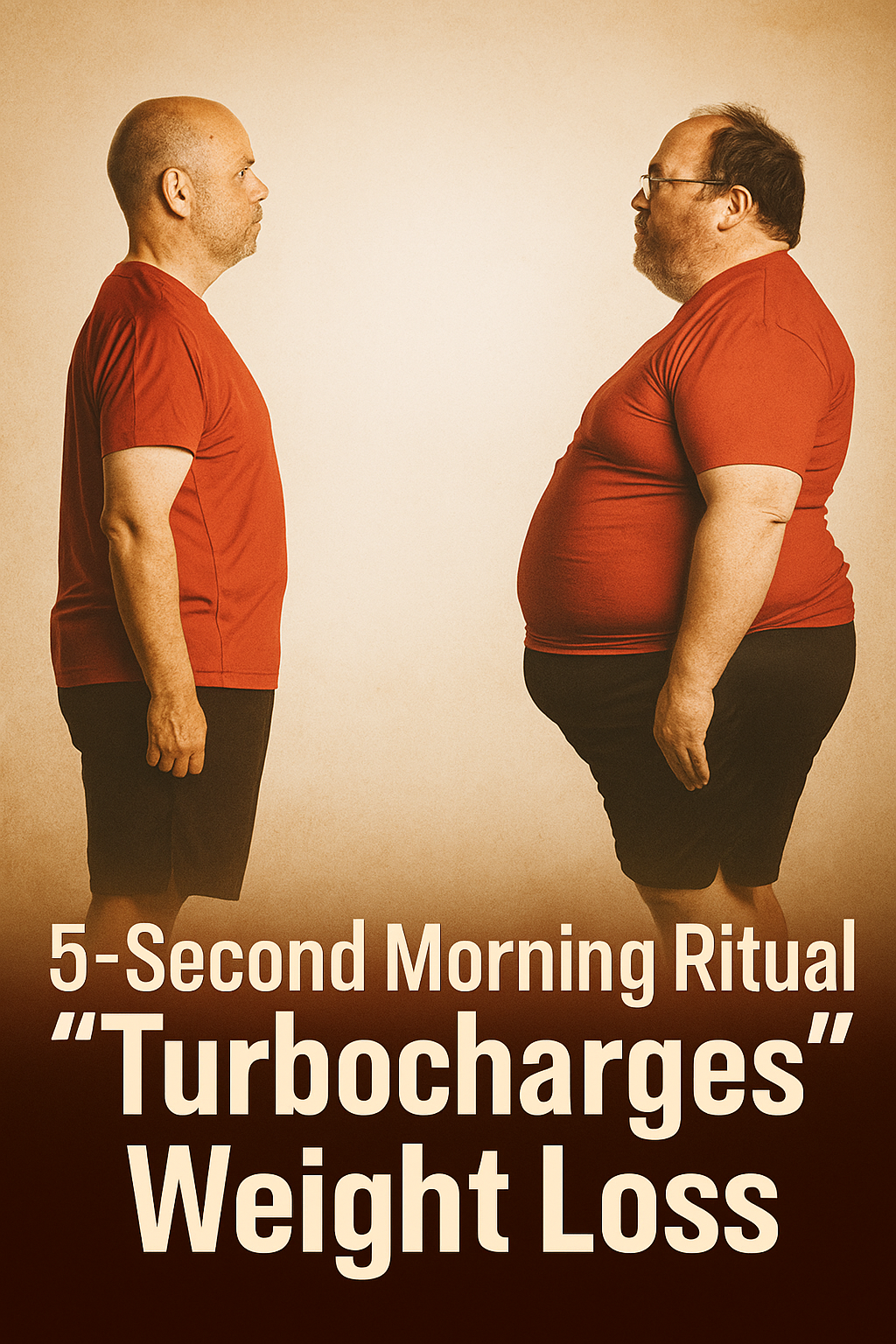
The Cellular Science of Weight Loss: How Mitolyn Supercharges Mitochondria
Your weight loss struggle isn't about willpower. It's about biology. Specifically, it's about tiny power plants inside your cells called mitochondria that have lost their ability to burn fat efficiently. This article breaks down the real science behind why fat loss becomes harder after 40 and introduces the targeted nutrient strategy that reactivates your cellular fat-burning machinery.
Dr Anonymous

You're eating less than you did in your 30s. You're hitting the gym three times a week. You've cut out sugar, tried intermittent fasting, and tracked every calorie.
And the scale barely moves.
Meanwhile, your younger coworker eats pizza for lunch every day and stays lean without trying.
The frustrating truth? Your metabolism isn't broken. Your mitochondria are.
Let me explain what that means and, more importantly, how to fix it.
What Mitochondria Actually Do (And Why You Should Care)
Remember high school biology? Mitochondria are the "powerhouses of the cell."
That textbook phrase is technically correct but wildly understated. Mitochondria are the reason you have energy to think, move, breathe, and yes, burn fat.
Here's how they work in simple terms:
Every cell in your body contains hundreds to thousands of mitochondria. These microscopic structures take the food you eat (broken down into glucose and fatty acids) and convert it into ATP, the energy currency your body actually uses.
When your mitochondria are healthy and abundant, they efficiently burn both sugar and fat for fuel. When you're at rest or doing low-intensity activity, they preferentially burn fat because it's energy-dense and readily available from your storage reserves.
This is why people with healthy mitochondria can eat normally, stay active, and maintain a lean body composition without obsessing over every calorie. But after age 40, something changes.
The Mitochondrial Decline That Sabotages Fat Loss Starting around age 40, two things happen to your mitochondria:
First, you start losing them. Studies show mitochondrial density (the number of mitochondria per cell) decreases by roughly 8% per decade after age 40. Fewer mitochondria means less total fat-burning capacity.
Second, the ones you have left become dysfunctional. They fragment into smaller, less efficient versions of themselves. Research from the National Institutes of Health found that when mitochondria fragment, fat cells lose their ability to efficiently burn stored energy.
Think of it like this: imagine you own a factory with 100 machines that turn raw materials into products. Over time, you lose 8 machines per year, and the remaining machines start running at 60% efficiency instead of 100%.
Your factory (body) is trying just as hard, but it's producing far less output (fat burning) because the machinery itself is compromised.
This is why the same diet and exercise routine that worked in your 30s stops working in your 40s. Your cellular infrastructure can't keep up with the demand. The metabolism slowdown everyone talks about isn't some mysterious force. It's literally the result of fewer, weaker mitochondria.
Why "Eat Less, Move More" Stops Working
Here's where conventional weight loss advice falls apart. When you drastically cut calories, your body interprets this as a threat. It responds by making your remaining mitochondria even more efficient at conserving energy, not burning it.
This is called metabolic adaptation. Your mitochondria downregulate their activity to match the reduced calorie intake. You end up burning fewer calories at rest, feeling constantly tired, and hitting frustrating plateaus.
Adding more cardio doesn't solve this either. Chronic cardio without proper recovery actually damages mitochondria through oxidative stress. You might lose weight initially, but you're further degrading your cellular fat-burning machinery in the process.
The weight comes back the moment you eat normally again because your mitochondria are now even less capable of handling the energy load.
This isn't a willpower problem. It's a biology problem. The Three Weight Loss Myths Keeping You Stuck Let me clear up some dangerous misconceptions that might be sabotaging your progress.
Myth 1: Your metabolism is permanently broken after 40 False. Your basal metabolic rate does decline, but not because of some irreversible aging curse. It declines because mitochondrial function declines. The good news? Mitochondrial function can be restored with the right interventions.
Myth 2: Fat burners work by speeding up your metabolism
Most "fat burners" are just caffeine and stimulants that temporarily increase energy expenditure. They do nothing to address mitochondrial dysfunction. Once the stimulant wears off, you're right back where you started, often with damaged adrenal glands and worse sleep quality.
Myth 3: You just need to exercise more intensely High-intensity exercise is valuable, but only if your mitochondria can handle it. If they're already dysfunctional, excessive intense training creates more oxidative damage than your cells can repair. You need to fix the foundation first.
What Actually Restores Mitochondrial Function
If you want to burn fat efficiently again, you need to do two things:
Strategy 1: Provide the raw materials mitochondria need to repair and multiply Mitochondria require specific nutrients to maintain their structure and function. These include CoQ10 (for electron transport), L-carnitine (to shuttle fatty acids into mitochondria), and specific B vitamins (for energy production pathways). When these nutrients are deficient, which becomes increasingly common after 40, mitochondrial function degrades regardless of how well you eat or exercise.
Strategy 2: Activate cellular signaling pathways that trigger mitochondrial biogenesis Your body has built-in mechanisms to create new mitochondria when it senses the need. Certain compounds activate these pathways, essentially telling your cells "we need more power plants in here." This is where targeted supplementation becomes critical. Why Most Mitochondrial Supplements Fail The supplement industry has caught onto the mitochondria story, and now every product claims to "boost metabolism" or "support mitochondrial health." Most are garbage.
Here's why: They use underdosed ingredients. Throwing 10mg of CoQ10 into a formula when you need 200mg daily is pointless. It's supplement fairy dust designed to look good on a label without actually working.
They use the wrong forms. Not all CoQ10 is equal. Ubiquinone (the standard form) has poor absorption compared to ubiquinol (the active form). Most cheap supplements use ubiquinone because it's half the cost.
They ignore bioavailability. L-carnitine by itself has notoriously poor absorption. Without specific cofactors and delivery mechanisms, most of what you swallow ends up in your toilet, not your mitochondria.
They focus on single nutrients. Mitochondrial restoration isn't a one-ingredient fix. It requires a synergistic combination of compounds working together, each addressing different aspects of mitochondrial function.
How Mitolyn Actually Works
After reviewing dozens of mitochondrial support formulas, Mitolyn is the first one I've seen that gets the science right.
Here's what makes it different: The Core Formula:
Ubiquinol (CoQ10 Active Form) - 200mg per serving This is the biologically active form of CoQ10 that doesn't require conversion in your body. It directly supports the electron transport chain, the mechanism by which mitochondria produce ATP. Clinical doses start at 100mg; Mitolyn provides double that.
Acetyl-L-Carnitine - 1,500mg per serving This is the absorbable form of L-carnitine that actually crosses into cells. It transports long-chain fatty acids into mitochondria where they can be burned for energy. This is the critical step that allows your body to use stored fat as fuel. The clinical effective dose is 1,000 to 2,000mg; Mitolyn hits the sweet spot.
PQQ (Pyrroloquinoline Quinone) - 20mg per serving This is the game-changer ingredient most formulas skip because it's expensive. PQQ activates genes responsible for creating new mitochondria (mitochondrial biogenesis). It doesn't just make existing mitochondria work better; it triggers your cells to build more. Studies show 20mg daily is the optimal dose.
R-Alpha Lipoic Acid - 300mg per serving The R-form (not the cheaper S-form) is a powerful mitochondrial antioxidant that protects against the oxidative damage that fragments mitochondria in the first place. It also regenerates other antioxidants like vitamin C and E, creating a protective network around your cellular energy systems.
BioPerine (Black Pepper Extract) - 10mg per serving This absorption enhancer increases the bioavailability of the other ingredients by up to 200%. Without it, you're wasting expensive nutrients.
Why This Combination Works:
Each ingredient addresses a different bottleneck in mitochondrial fat burning:
CoQ10 and ALA ensure existing mitochondria work efficiently and stay protected. L-carnitine makes sure fatty acids can actually get into mitochondria to be burned. PQQ triggers the creation of new mitochondria, expanding your total fat-burning capacity. BioPerine ensures everything actually gets absorbed.
This isn't a stimulant formula. You won't feel jittery or crash later. What you will notice over 3 to 4 weeks is sustained energy, easier fat loss, and the feeling that your metabolism is finally cooperating with your efforts instead of fighting against them.
What to Expect (Real Timeline) Let's be honest about expectations:
Week 1 to 2: You'll likely notice improved energy levels and mental clarity. This is the CoQ10 and L-carnitine improving existing mitochondrial efficiency. Week 3 to 4: Fat loss becomes noticeably easier. The scale starts moving again, and your body composition begins to shift. This is when PQQ-induced mitochondrial biogenesis kicks in. Week 6 to 8: Your metabolism feels normalized. You can eat reasonable portions without immediately storing fat. Exercise feels more productive. Recovery improves. This is the full restoration of mitochondrial function. Week 12+: Sustained results. Your body maintains a leaner composition with less effort because your cellular machinery is working properly again.
This isn't a 7-day miracle. It's a systematic restoration of cellular function. But the results are real and lasting because you're fixing the root cause, not just masking symptoms.
Your Cellular Upgrade Plan
Here's the practical approach:
Start with Mitolyn: Take it daily with your first meal. The fat-soluble ingredients (CoQ10, ALA) absorb better with dietary fats.
Support with movement: You don't need brutal workouts. Focus on consistent activity: walking, resistance training 2 to 3 times per week, and occasional high-intensity intervals. Movement signals your body to maintain and build mitochondria.
Eat enough protein: Your body needs amino acids to build new mitochondria. Aim for 0.8g per pound of body weight daily.
Prioritize sleep: Mitochondrial repair happens during deep sleep. Seven to eight hours is non-negotiable.
Be patient: Cellular regeneration takes weeks, not days. Commit to 60 days minimum before judging results. Your body wants to burn fat efficiently. It's designed to. But it can't do it with broken machinery.
Mitolyn provides the tools to repair that machinery at the cellular level. No stimulants. No gimmicks. Just targeted nutrients that restore your mitochondria's ability to do what they're supposed to do: turn stored fat into usable energy.
If you've been frustrated by weight loss resistance despite doing everything "right," your mitochondria are probably the missing piece.
Fix the cells. Fix the metabolism. Finally see the results your effort deserves.
You can find Mitolyn at their official website with a 60-day satisfaction guarantee, which gives you enough time to experience the full mitochondrial restoration process without risk.
Give your cells what they need to work properly again. The rest will follow.
